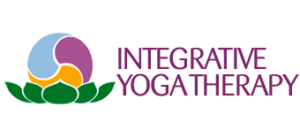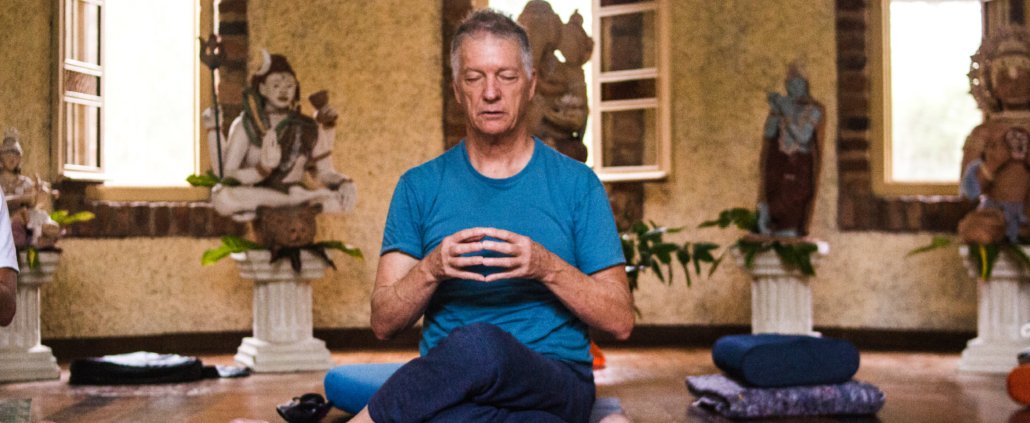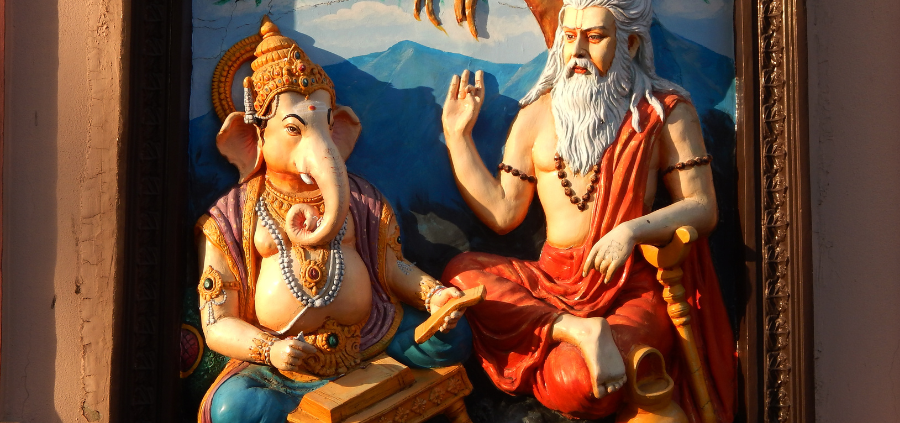Joseph Le Page is one of the Yoga Therapists in the online Summit How Yoga Heals by Soma Yoga Institute
The Use of Hand Gestures, Mudras, in Yoga Therapy is the workshop Joseph Le Page is presenting at the FREE Virtual Yoga Summit and CE series, How Yoga Heals on February 3 at 9:30am-11:00am PST (California) /12:30pm-2:00pm (New York) / 5:30pm -7:00pm (London).
“This workshop will present and practice mudras for a wide range of therapeutic applications including mudras for specific health conditions, mudras for directing the breath to specific areas of the body for healing, mudras for balancing the autonomic nervous system, mudras for cultivating healing qualities and mudras for spiritual healing. All participants will receive a ten-page handout with detailed information on the material presented.”
About Joseph Le Page
Joseph Le Page is the founder of Integrative Yoga and Integrative Yoga Therapy, a pioneer in the field of Yoga therapy training programs since 1993. He is co-founder and director of the Enchanted Mountain Yoga Center in Santa Catarina, Brazil, one of the largest Yoga retreat centers in South America. He is the co-author of the book Yoga Toolbox for Teacher and Students, one of the most widely used materials in teacher training programs in the US and in Brazil, published by Integrative Yoga. He is also co-author of the book Mudras for Healing and Transformation, also published by Integrative Yoga. Joseph’s upcoming book, together with Karin Silberberg, is Pranayama for Healing and Transformation. Joseph is currently on the faculty of Inner Peace Yoga Therapy.
How Yoga Heals
To get to know more and join the FREE Virtual Yoga Summit and CE series, How Yoga Heals, featuring an incredible lineup of C-IAYT Yoga Therapists and Yoga Professionals, click here!
Open to anyone interested in yoga, including students, teachers and wellness professionals from all disciplines.
This content-rich event includes transformational perspectives, real-life stories, practices, and cutting-edge research, all of which are designed to benefit yoga teachers, medical professionals, mental health advocates, and anyone looking to learn more about the healing power of yoga.
Yoga teachers get 16 hours of FREE Continuing Education credits available through Yoga Alliance.
Join us from February 2-14, 2023, each day from 9:30am-11:00am PST (California) | 12:30pm-2:00pm EST (New York) | 5:30pm-7:00pm (London). Recordings will also be available for those who are unable to attend live.
The History of Yoga – part II
Continued on the History of Yoga. Follow below.
- Samkhya – A philosophy originating approximately 3,000 years ago that influenced all other Yoga traditions that came after. Jnana Yoga.
Spiritual path as a science of describing the nature of the universe and mind
- This philosophy sees itself as the mother of science;
- The concepts of avidya, hope and suffering and kaivalya, enlightenment as salvation appear for the first time;
The aim was to describe all components of the Universe with spirit as the most fundamental; - The original Samkhya makes no reference to God because the aim is scientific and not religious investigation;
- Samkhya declares that the Universe is a school where we can discover our true nature with spirit;
- Pure spirit, purusha, is seen as distinct from matter, prakriti;
- Every Yoga that came after is based on this philosophy in one way or another;
- The methodology of Samkhya is contemplation on the spirit and discernment between matter and spirit.
What keeps a person attached to matter is the activity of the three gunas – rajas, tamas and sattva.
Recognition of the real Being as the purpose of life / The personality as a matrix of conditioning that produces suffering / reincarnation as the destiny of those who do not recognize the real being
- Within samkhya philosophy, the world exists as a school for recognizing the Real Self;
- Personality, and all the likes and dislikes associated with it, are considered conditionings that do not reflect the real Self;
- Suffering serves to warn us that we are moving away from our true nature;
- Experiences, peace and harmony that bloom from the inside out, indicate to us that we are approaching the real Being;
- As long as the purusha is not recognized, we continue in a cycle of endless births.
The Nature of the world under the influence of the gunas
- Because of the polarity of the gunas, the material world by itself does not offer happiness, but creates suffering and limitation.
- Rajas is an energy of desire and expansion related to the search for happiness and satisfaction in the present and future;
- Rajas have value when channeled to the spiritual path;
- Tamas is an energy of inertia, conservatism and stagnation that tends to focus on the past;
- Tamas energy is needed to create ground for the spiritual journey;
- Sattva is an energy of balance that focuses on the present moment. Associated with positive emotions such as love and compassion, lightness and openness of heart, Sattva is a gateway to the experience of enlightenment;
- Because it’s a rollercoaster of ups and downs, the only way to avoid getting sick is to get out of the game of trying to find happiness in matter and find it within yourself.
The Art and Science of Yoga Therapy and the Five Koshas
On February 26th, Joseph Le Page will be presenting the twelve-week course, the Art and Science of Yoga Therapy, for Inner Peace Yoga Therapy.
“Within this course, we use the model of the Five Koshas, the five dimensions of our being as a framework for the theory and practice of Yoga Therapy. The objective of the model of the Five Koshas is essentially spiritual; to provide a clear path to union with our true Being.
Along this journey however, as we traverse each of the koshas, we gain an in-depth awareness of each of the dimensions of our being, allowing us to cultivate integration and harmony which supports our overall health and the process of healing. Along this journey of awareness, we also cultivate health and healing which both support our journey and reflect our growing approximation to the source and essence of health.
Through an in depth understanding of the model of the Five Koshas, we create a foundation for the Art and Science of Yoga Therapy, serving three main functions:
- The Koshas form a framework for healing at each level of our being; each facet of our lives requires consciousness, care, and evolution cultivated through Yoga practices specifically designed for each person’s individual needs.
- Secondly, the koshas function as a framework for developing competencies at each level of being, allowing the Yoga Therapist to master an understanding of health at physical, energetic, psycho-emotional, intuitive, and spiritual levels.
- The third function of the koshas is to remind that that the purpose of all of Yoga, including Yoga Therapy is the recognition of our true Being, whose very nature is wholeness and peace, and that health and healing are ultimately reflections of our union with the one source energy.
On the video, we review each of the koshas briefly and meditate on them!




